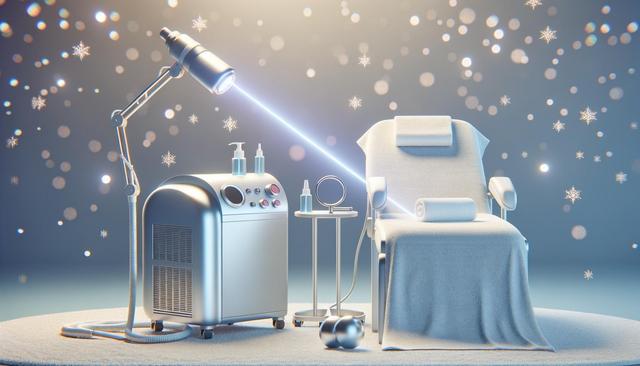Understanding the Types of Laser Skin Treatments and What They Are Used For
Laser skin treatments encompass a variety of technologies designed to target different skin concerns. Each type of laser operates at specific wavelengths, depths, and intensities to achieve results tailored to individual needs. The most common types include ablative lasers, non-ablative lasers, and fractional lasers. Ablative lasers remove the outer layers of skin and are typically used for deeper skin resurfacing. Non-ablative lasers, on the other hand, target underlying skin layers to stimulate collagen without damaging the surface. Fractional lasers deliver focused energy to small areas, making them suitable for treating fine lines, pigmentation, and scars with minimal downtime.
These treatments are used to address a wide array of skin conditions, such as:
- Acne scars and surgical scars
- Fine lines and wrinkles
- Sun damage and pigmentation issues
- Enlarged pores
- Uneven skin tone and texture
Understanding the types of laser skin treatments and what they are used for can help individuals choose an option that aligns with their skin type, concerns, and lifestyle preferences.
Laser Resurfacing vs Laser Tightening: Pros and Cons
When deciding between laser resurfacing and laser tightening, it’s important to understand how each method works and what outcomes to expect. Laser resurfacing is designed to remove layers of skin to improve tone and texture, making it effective for deep wrinkles and scars. In contrast, laser tightening uses heat to stimulate collagen production and firm the skin without removing the surface layers.
Pros of laser resurfacing:
- Can significantly improve deep wrinkles and scars
- Provides noticeable results after just one session
- Effective for uneven pigmentation
Cons of laser resurfacing:
- Longer recovery time
- May require downtime due to redness and peeling
- Higher cost compared to non-ablative treatments
Pros of laser tightening:
- Minimal to no downtime
- Improves skin elasticity and firmness over time
- Safe for a broader range of skin tones
Cons of laser tightening:
- Gradual results that may take several sessions
- Less effective for severe wrinkles or deep scars
Choosing between laser resurfacing vs laser tightening pros and cons depends on one’s skin condition, recovery time availability, and desired results.
What to Expect Before and After a Laser Skin Procedure
Preparation and aftercare are important components of any laser skin treatment. Understanding what to expect before and after a laser skin procedure helps ensure better results and a smoother recovery. Before treatment, patients may be advised to avoid sun exposure, skincare products with retinoids, and certain medications that increase skin sensitivity. A consultation with a licensed provider will also include a discussion of skin type, treatment goals, and any potential risks or side effects.
Immediately after the procedure, patients can expect redness, swelling, and a sensation similar to a mild sunburn. These effects typically subside within a few days to a week, depending on the type of laser used. Recovery protocols may include:
- Applying soothing creams or ointments
- Avoiding direct sunlight and using broad-spectrum sunscreen
- Keeping the treated area clean to prevent infection
Long-term results depend on following aftercare instructions closely and maintaining a skincare routine that supports skin healing. Knowing what to expect before and after a laser skin procedure can help manage expectations and enhance satisfaction with the outcome.
How Many Sessions Are Needed for Laser Acne or Scar Treatment?
Laser treatments for acne and scars typically require multiple sessions to achieve optimal results. The exact number of sessions will depend on the severity of the condition, the type of laser used, and the individual’s skin response. For mild to moderate acne scars, patients may see improvements after 3 to 5 sessions spaced about 4 to 6 weeks apart. More severe scarring or persistent acne may require up to 6 to 8 sessions or more.
Laser treatments work by stimulating collagen and remodeling the skin over time. Because this process is gradual, multiple treatments allow the skin to heal and regenerate more effectively. Providers often recommend a tailored treatment plan that includes:
- A detailed skin assessment
- Customized laser settings based on skin type
- Post-treatment care and follow-up
Patients undergoing laser acne or scar treatment should be prepared for a commitment of several months to see the full benefits. Understanding how many sessions are needed for laser acne or scar treatment can help individuals plan accordingly and set realistic expectations.
Average Cost of Laser Skin Treatments by Type
The cost of laser skin treatments varies widely depending on the type of procedure, the complexity of the condition being treated, and the provider’s location and expertise. On average, prices can range from a few hundred to several thousand dollars per session. Understanding the average cost of laser skin treatments by type can help individuals make informed decisions and budget appropriately.
Typical cost ranges include:
- Laser resurfacing: $1,000 to $2,500 per session
- Laser tightening: $500 to $1,500 per session
- Laser acne/scar treatments: $300 to $1,000 per session
- Fractional laser treatments: $700 to $1,800 per session
Additional factors impacting cost include the number of sessions required, the size of the treatment area, and whether anesthesia or follow-up visits are needed. While higher-end treatments may come with a larger price tag, they often offer longer-lasting results or target complex issues. Discussing financial expectations with a provider can also reveal package deals or payment plans that make treatments more accessible.
Conclusion: Is Laser Skin Treatment Right for You?
Laser skin treatments offer a versatile solution for a variety of skin concerns, ranging from acne scars and wrinkles to pigmentation and laxity. When considering these procedures, it’s essential to understand the types of laser skin treatments and what they are used for, as well as the pros and cons of laser resurfacing vs laser tightening. Knowing what to expect before and after a laser skin procedure, how many sessions are needed for laser acne or scar treatment, and the average cost of laser skin treatments by type will help you make informed, realistic choices.
Always consult with a qualified dermatologist or licensed practitioner to evaluate your skin type, discuss your goals, and develop a personalized treatment plan. With the right approach, laser treatments can be a valuable addition to your long-term skincare strategy.




Leave a Reply